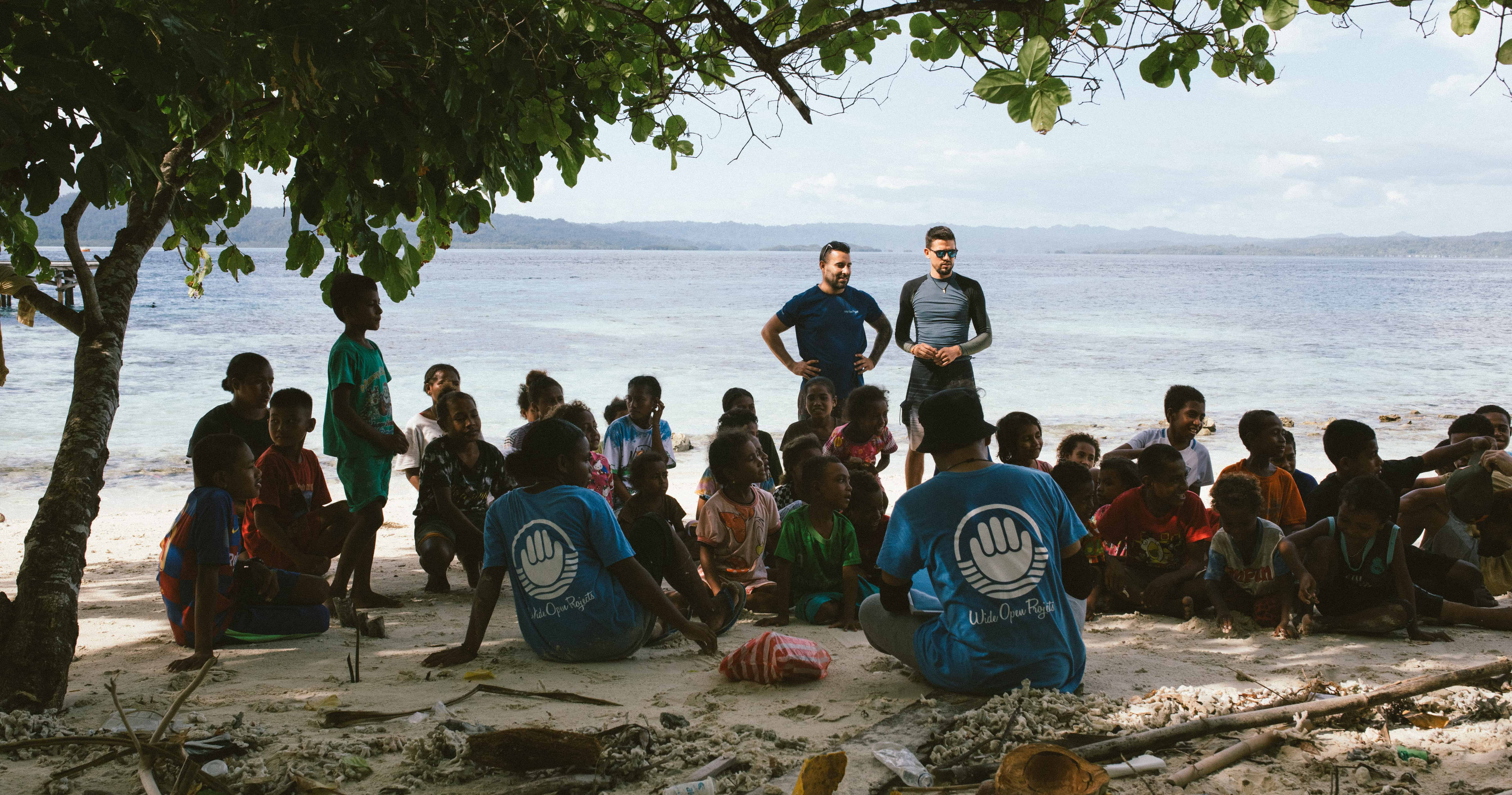A diverse ecosystem
The coral reefs of Raja Ampat, located in the province of West Papua in eastern Indonesia, are home to an incredible diversity of marine life and support the livelihoods of thousands of people in this region. Here, communities rely heavily on fishing and local tradition encourages sustainability and ecosystem preservation. However, like in most coastal regions, these coral reefs are facing multiple threats.
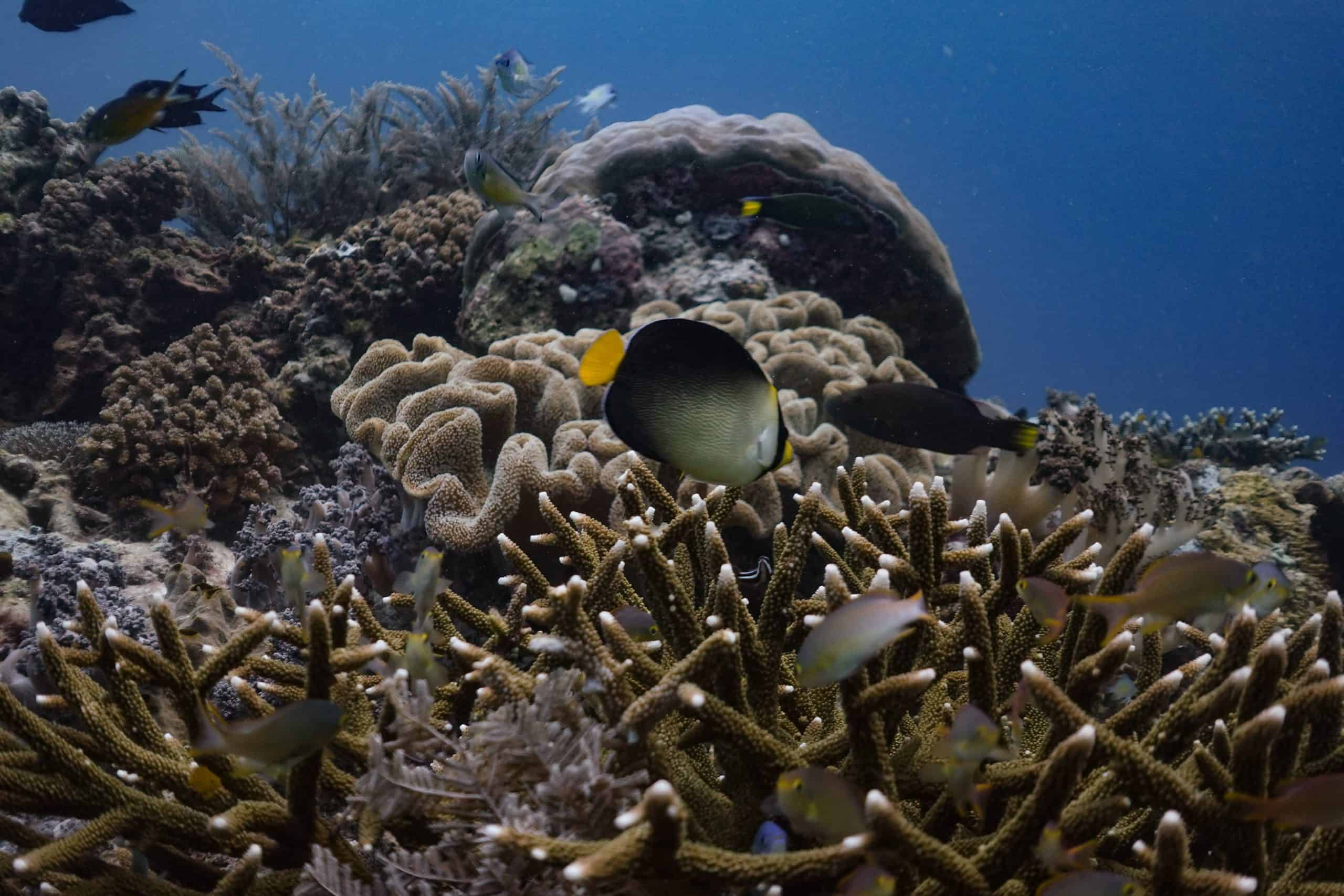
A lingering threat from the past: destructive fishing practices
With the introduction of destructive fishing practices in the 1980s, many fishermen turned to using dynamite or cyanide to catch fish, poisoning the reefs and threatening future livelihoods. The effect of these practices is still observable today, where dead coral rubble prevents recolonization of the reef because it is too unstable. It additionally poses a threat to nearby healthy reefs as it covers and kills coral colonies. Fortunately, the economy of the region has changed rapidly in recent years with the establishment of a marine protected area (MPA) network in 2007. This triggered a shift toward the tourism industry, which has significantly grown in the past decade – and is still exponentially growing.

Current threats: mass tourism, overfishing & coastal development
Raja Ampat is renown for its marine diversity, and most popular diving areas are now well over their carrying capacity of visitors. Going beyond this threshold means that the coral reef cannot persist without significant degradation. Direct effects can include damage from inexperienced divers and increased boat traffic, but it is also putting indirect pressure on the local reefs through overfishing, coastal development and pollution. On top of the direct damage, one consequence of these activities is the destabilization of local marine ecosystems, which leads to population outbreaks of the crown-of-thorns starfish (COTS), Acanthaster planci. This starfish species is native to the Indo-Pacific and feeds on fast-growing coral, which usually helps to keep reefs healthy. However, population outbreaks caused by overfishing of their natural predators and sewage runoff leads to unsustainable densities of COTS and prevent reefs from recovering fast enough.
Our coral restoration projects
How can we mitigate these threats and how can we ensure damaged coral reefs are thriving once again? We, as Wide Open Projects, address this problem through community-focused restoration projects with broad and long-term impacts:
Stabilizing dead coral rubble
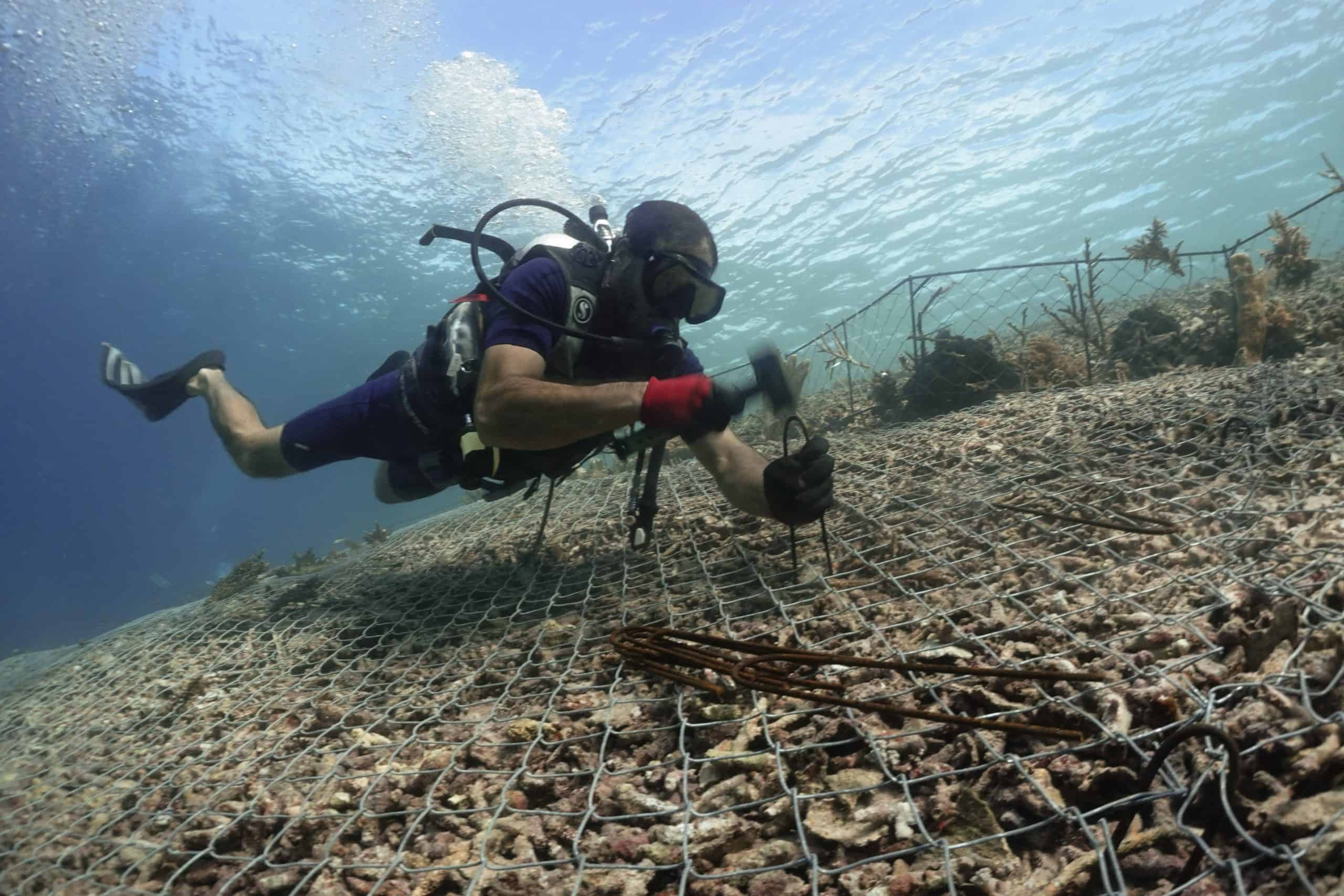
Some damaged underwater slopes are covered by cascading dead coral rubble. By placing fencing on this rubble, we effectively stabilize an unstable surface and accelerate coral recolonization. We pair this method with rubble-stopping perpendicular fences in a zigzag pattern.
Modular underwater structures
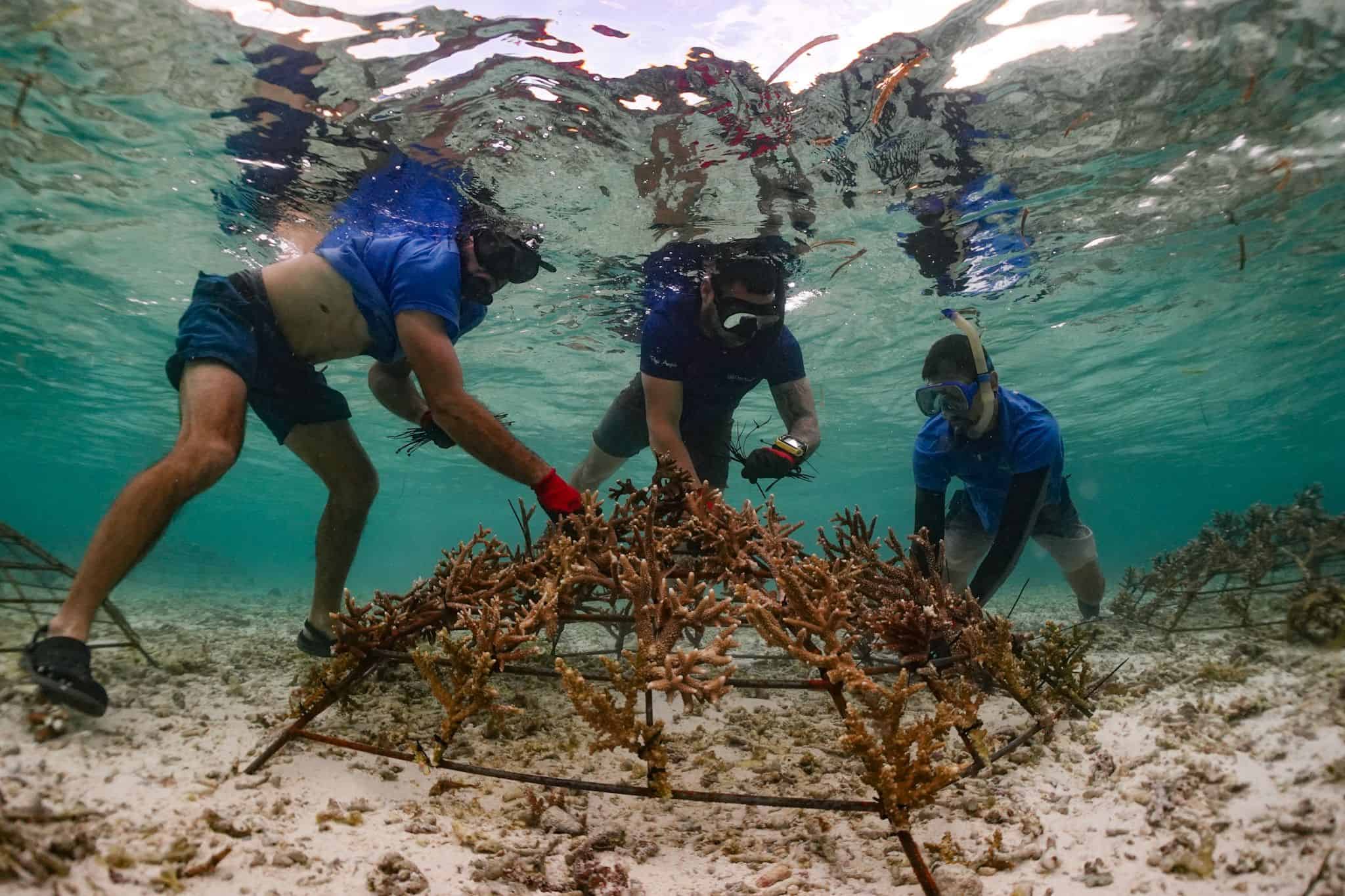
Damaged areas often need a stable substrate for new coral colonies. We collect loose coral fragments destined to die and attach them onto modular artificial reefs. These structures provide a new life for coral fragments and their three-dimensional half-dome shape creates new habitat for marine life.
Crown-of-Thorns control
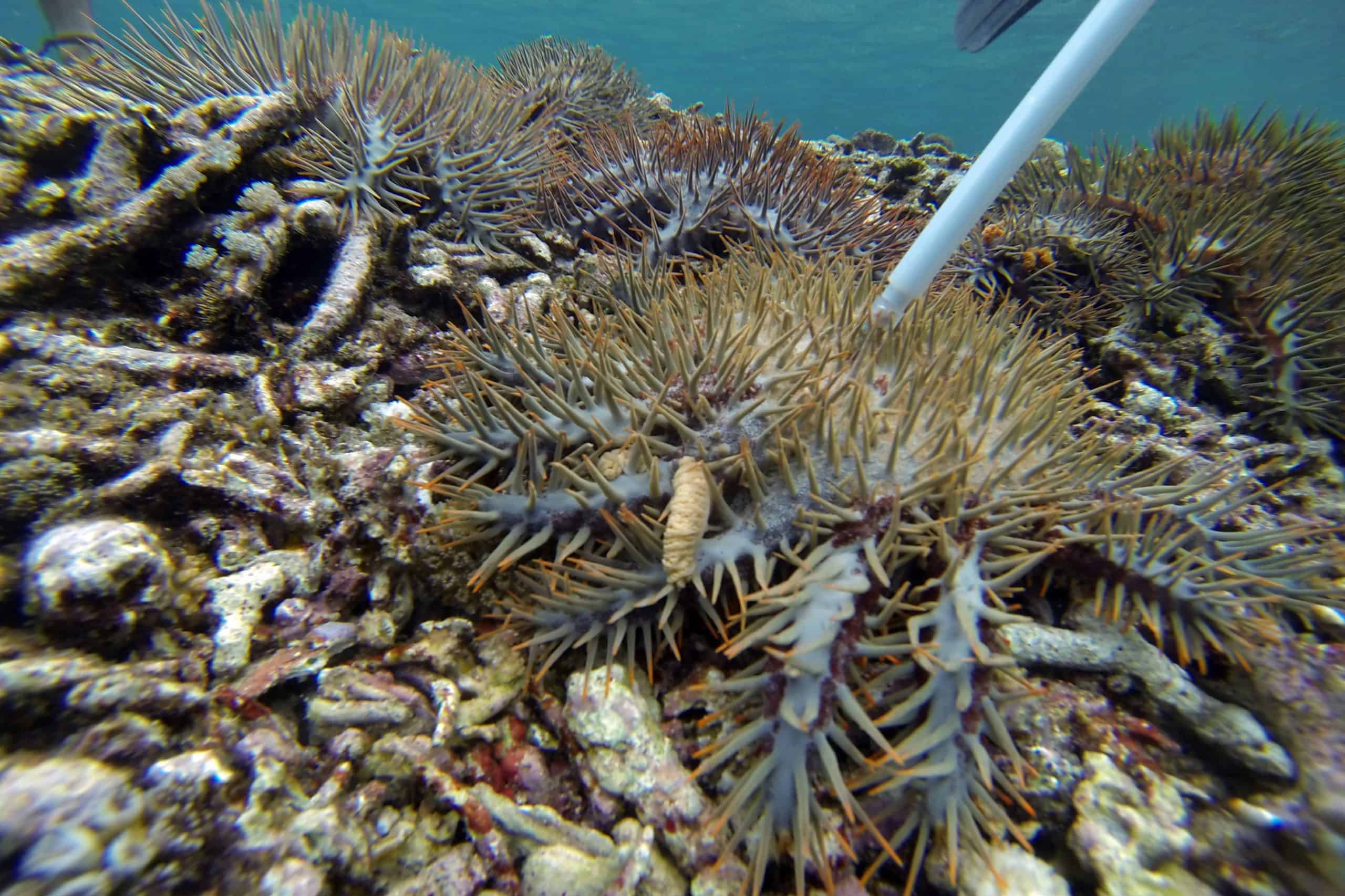
Many local communities face the decimation of their local reefs by Crown-of-Thorns population outbreaks. To address this, we directly remove or kill as many individuals as possible in affected areas. These localized controls contribute to avoid inevitable future degradation.
No restoration without education
All our restoration activities are performed in collaboration with local partners with an overarching educational approach. Additionally, we raise awareness about sustainability, coral ecology and plastic pollution in communities of Raja Ampat. During these educational activities, we promote the prevention of irreversible ecological and economical negative outcomes through engaging and fun activities with children.
